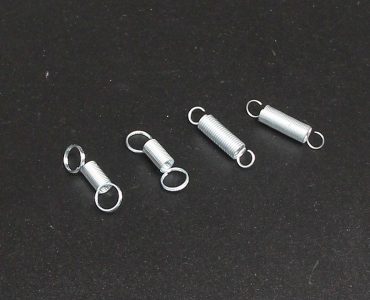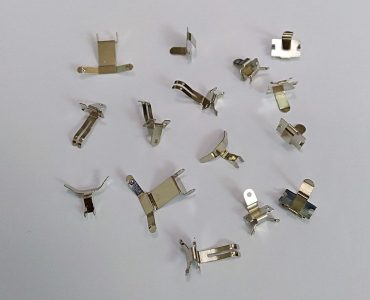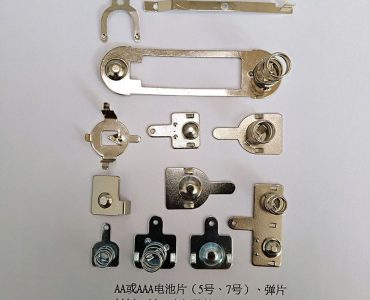Partial structure with hook tension spring
There are many ways to structure the hook part of the tension spring, and the more commonly used ones have been included in the national standard. The shape of the end of the tension spring is mainly shackles, which are formed by bending the end coils or steel wires. When designing or selecting the end structure, the main consideration is the installation method of the spring in the machine hook, the installation space, the nature of the load and other factors. On the premise of meeting the requirements, the simple structure shape should be selected as much as possible.
1, Half ring, the spring is bent from the end of the half coil, for a restricted spatial applications.
2. Change the round shackle, which is formed by bending the spring coil to the center at the end of the spring. High stress is formed at the bending and torsion. It is suitable for springs with a large winding ratio and a smaller load.
3. The eccentric round shackle is formed by bending the ending spring loop. The shackle is located at the tangent position of the edge of the spring loop. Because of the eccentricity of the load and the 90-degree bending of the root of the shackle, the steel wire is subjected to greater additional stress. This type of end structure is suitable for springs with medium winding ratios of 8-15 and small or unimportant loads.
compressed spring
The pressing center of the round shackle located in the center of the spring ring is also formed by bending the end spring ring to the center. Compared with the eccentric round shackle, it can prevent the eccentricity of the load and is safer and more reliable. It is widely used in the winding ratio C<20, Spring with higher load.
LV and LM are long-arm shackles, which are complicated to process, and generally try to prevent them from being used. All shackles formed by bending processing have a relatively large stress concentration at the bend of the steel wire. Therefore, the end structure of the shackle formed by bending processing is recommended to be used for springs with a material diameter of less than 4mm. But because this method is simple, it is sometimes used for springs with a material diameter of about 10 mm. In order to reduce the stress concentration, an additional hook and loop structure can be used, such as an adjustable structure. The cylindrical plug with a spiral is screwed into the spring at both ends for 1.5-2.5 turns, and an additional screw is added to the cylindrical plug. This structure is suitable for materials with a diameter larger than 5mm spring. The end of the spring can also be made into a tapered closed end, and the other can be attached with a rotatable hook loop. The relative positions of the hooks at both ends can be in a straight line or at 90 degrees to each other, or at any desired angle.




